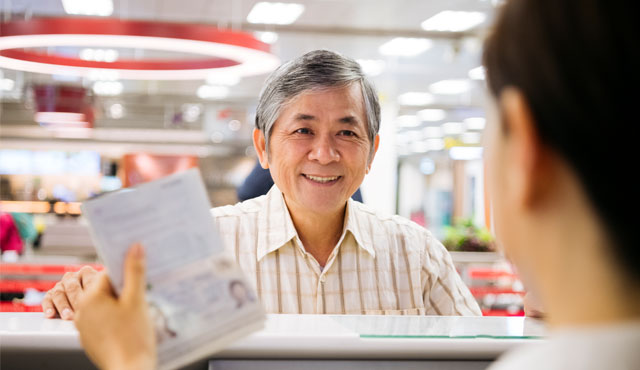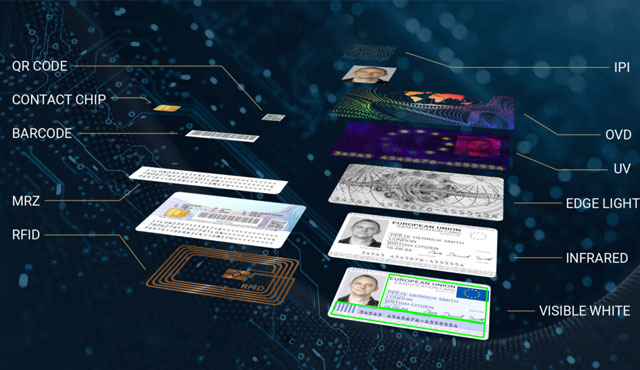Verifying identity documents is like running – you can run a sprint, but also a marathon. Both are the same movement, but their speed and duration are entirely different.
Think of this metaphor to better understand ID verification. Think of first-line verification as a sprint and second-line authentication as a long-distance run. This article shows you why these two different concepts exist and what kind of security checks are in use.
The Anatomy of an ID
To see the depths of ID verification, you should start with the ID itself. Its key function is to hold the owner’s data and the document itself. However, all data are subject to forgeries and alterations, therefore, its protection is a must.
That’s why an ID is full of security marks, prints, patterns, holograms: these are all features that protect the genuineness of identification documents and avoid copying and forging them. When checking IDs, these features play a significant role.
This Happens During ID Checks
When forgery experts are verifying IDs, they go through a virtual checklist: taking a look at the mentioned security features one by one. Some features are easy to verify, some are not. Some can be verified just by touching and tilting the document or looking closely at it, while others require special equipment.
First-Line Verification
The so-called first-line verification is a list of checks that happen quickly, within a few seconds. It also verifies the document’s genuineness with relatively high confidence. This is usually done automatically by passport reader devices or manually by the border control personnel. The common factor is the speed and the high probability of detecting falsification.
If there is nothing extraordinary found, the check gets completed, and the passport holder can move on.

When ID document scanner devices carry out the first-line authentication, the following features are verified:
- Printed data: the system extracts the MRZ (Machine Readable Zone) standardized code lines – according to the ICAO9303 standard – and automatically verifies the security hash numbers, while also checking the document’s expiry date.
- Ink: the so-called B900 ink check is performed using infrared illumination. The passport inspection system detects whether the printed data uses the appropriate ink type.
- Paper material: also called UV dullness check, the device checks the response of the paper under UV illumination to confirm if the document is printed on security paper (also called UV-dull paper).
- Digital data: if the document possesses an RFID chip and the inspection system has the capability of reading it, the digital content is also being verified. The terminal establishes a secure communication channel and extracts the digital chip content for cross-checking it with the printed data.
Second-Line Verification
Also called second-line checks, it takes a remarkably long time and requires special equipment and expert knowledge of identity documents. The second-line checks usually come into the picture if an ID fails at the first-line checks or the system detects some kind of alert. Consequentially, the ID goes through a more thorough analysis, either using special wavelengths of illuminations or applying high magnification using a microscope.
“Second-line check” means a further check which may be carried out in a special location away from the location at which all persons are checked (first line)“
Source: Wikipedia
There is special equipment available for this purpose. These are devices that use more illumination sources than compact passport readers and also include high optical zoom to check delicate background graphics, microprints, etc. This type of equipment is large, heavy, and expensive – used only by specialists.

Our Scope in ID Verification
At Adaptive Recognition, we develop technology for maximizing the potential of first-line verification checks. This is what our passport readers have done perfectly in border control systems for decades, banks, casinos, and a wide range of front-office applications where ID checks are crucial.
Osmond is our latest first-line verification device. However, it is not purely a first-line model; it has some extra features that position it almost in the second-line class like its unique edge light feature or the high resolution that lets you check even some types of microprints).

Learn More About First-Line Checks in These Projects
Recently, we participated in two first-line check projects, both carried out with ABC (Automated Border Control) e-gates. Our devices – like our flagship product Osmond passport reader – work in tandem with these automatic gates via integration, playing an important role in automatically scanning and verifying the document. The devices even compare the retrieved face photograph with the live face portrait of the traveler.
Read the following case studies:
Any questions or inquiries? We’re here to support you every step of the way:

